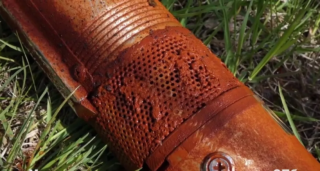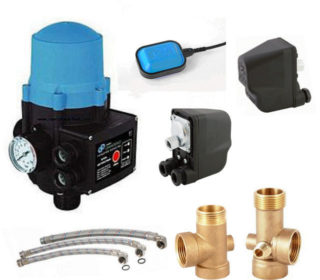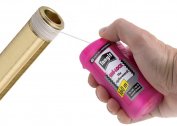Owners of private households in whose territory the well is located sometimes have problems with water supply. In some cases, water cannot flow from a well with a pump. To get rid of the problem, first of all, it needs to be installed correctly. There are several main causes of malfunctions and how to solve them.
The main causes of pump malfunctions
If the pressure is weak or not at all, and the water system continues to buzz, perhaps the problem lies in the mechanical damage to the unit or its clogging. It is necessary to analyze whether the quality of water has changed in recent days. If yes, most likely the cause of the malfunction is an ordinary blockage. Sand, silt, algae clog the system and disable the pump.
The most obvious characteristic feature of clogging is the appearance in the water flowing from the tap, sand and other impurities. Gradually, the pressure becomes less until the water stops flowing at all. Most pumps are equipped with pollution protection, but it does not always work properly.
Blockage elimination
To get rid of the problem, you will need to follow these steps:
- The submersible pump is raised to the surface from the well.
- Pump out the remaining water from the station with a pump.
- Thoroughly flush the internal components of the hose and the entire device.
- Repeatedly turn on the pump and pump out the liquid.
It is recommended to clean the device regularly. Preventive cleaning will have a beneficial effect on water quality and pump life.
The pump is operating but does not pump water
If problems with the electrics, hoses and pipes have not been identified, the reason lies in the pump itself. Before you start pumping fluid from the well, you need to carry out the following algorithm of actions:
- Check the function of the check valve and filter. They must be cleaned or, if necessary, completely replaced. This will depend on the degree of deterioration of the parts and their contamination. Components are not so expensive, so it is better to change them at the first sign of deformation and deterioration.
- A common problem is that a unit that shuts down the system when the fluid is shut off may burn out or cause mechanical damage. It does not make sense to repair this component; it needs to be replaced with a new part. Due to this, it will be possible to minimize the likelihood of repeated failure. In conclusion, it is also worth checking whether the water supply from the well is optimal, since the part can often fail if the water level in the well drops to a critical level.
Unfortunately, the list of common faults does not end there. The reasons why the water pump stops pumping fluid:
- Centrifugal pumps are quite powerful, so they can pump out the fluid faster than it will fill in the well. It is necessary to choose the right pumping equipment based on the needs that it must meet.
- The unit will not have the necessary capacity to ensure good pressure in the house if the water depth is about 40 m, and the pump is designed to pump water from a depth of 25-30 m.
- Power outages can adversely affect the operation of all electrical appliances. To avoid equipment breakdowns or burning, it is recommended to install voltage stabilizers.
- Disconnect from the pipeline. This problem is accompanied by a characteristic gurgle.
If all the above methods for solving the problem did not help, you need to get the submersible pump from the well and take it to a service center. If there is no necessary knowledge, you can not proceed to repair yourself. The unit must remain airtight due to operation in a humid environment.
Other issues
The most common failures include:
- Violations in the work of electricians, one or more parts are out of order.
- The mechanical parts of the water pump are out of order.
- Pipeline leakage. The cause may also be the formation of cracks and holes in the pipes.
- Violations in the operation of the control nodes of the pumping station.
To identify the problem, you need to remove the pump from the well and immerse it in a container filled with clean water. You can use a large barrel or basin. If when you turn on the engine continues to work properly, the electrician is working properly. If the motor does not show "signs of life", you need to call a specialist.
It is not recommended to start repairing the engine yourself. A professional must repair the damage.
During operation, you need to pay attention to whether there are cracks or holes in the pipes. Any, even slight deformation, negatively affects pressure. To make sure that it is working properly, you need to close the outlet hole with your hands. Thus, the pressure in the pipes will increase and even minor damaged places will manifest themselves.
If the hose has been torn, it makes no sense to seal it. Need to get a new one. This is due to the fact that the sealed hose under the action of strong pressure of the liquid will tear again. Adhesive tape will tear off, and glue will be washed off.
Troubleshooting principle
For the smooth and proper operation of submersible and surface pumps, only two things are required - electricity and water. If you calculate which of these elements does not allow the equipment to work, this will simplify the process of finding damage.
For an uninterrupted supply of water to the house, you must comply with 4 fundamental conditions:
- There must be water in the source.
- The pumping station must be provided with uninterrupted power supply. This implies the appropriate frequency and voltage for which the pump is designed.
- Performance and power indicators should be within normal limits, this indicates the health of the equipment.
- All pipelines, taps, valves and filters must perform their tasks without interruption.
As a rule, the water supply system in private houses is also used for watering the garden, lawn irrigation. The source of failure can be in three places:
- in the hydraulic unit;
- in the ground;
- inside the house.
Calculating problems is recommended by the exception method. To do this, disconnect the supply hose in the caisson. If the water continues to flow, the fault must be sought on the main pipeline in the trench or in the house itself. If the water has stopped flowing, look for the problem below the ground level in the equipment or well.





